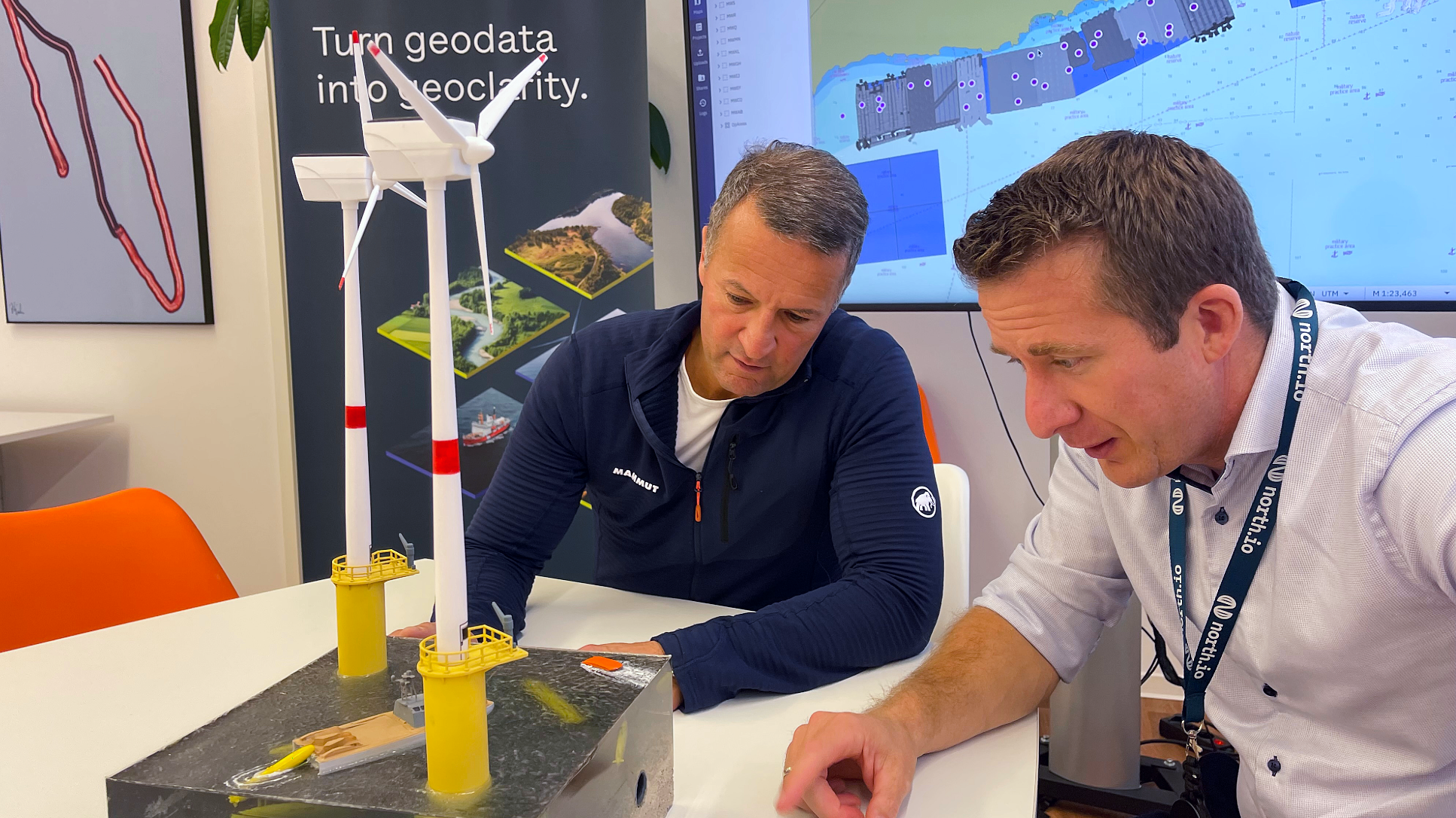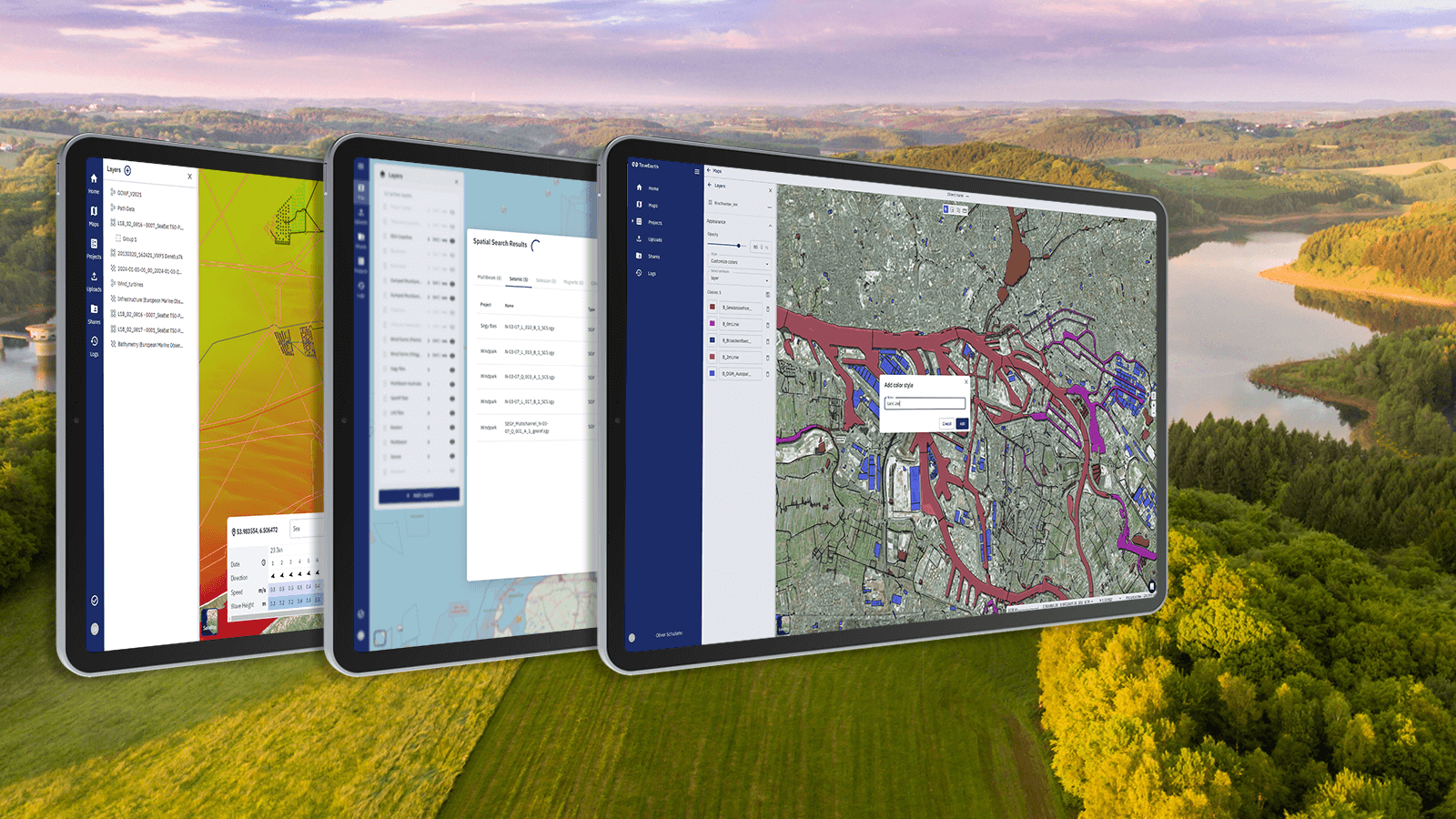north.io - The Digital Backbone of Underwater Domain Awareness
Securing our oceans and especially our critical infrastructure at sea requires more than ships and sensors — it demands fast, reliable access to...
Felde, Germany. Thousands of bombs still lie in the ground in Schleswig-Holstein (SH). During the Second World War, the Allies dropped over two million tonnes of explosives on Germany alone. According to current estimates (as of 2022), there are still up to 300,000 tonnes of unexploded ordnance in the ground throughout Germany - also known colloquially as unexploded bombs. To put this into perspective, this is equivalent to the weight of around 200,000 VW Golf cars. These in turn would require a car park the size of around 210 football pitches.
 Around 84,000 aerial photographs are now the primary tool used by the Explosive Ordnance Clearance Service in Schleswig-Holstein in the search for these dangerous contaminated sites, as they show bomb craters and impact holes that indicate an UXO (Unexploded Ordnance), as these unexploded war relics are called in the jargon of the specialists.
Around 84,000 aerial photographs are now the primary tool used by the Explosive Ordnance Clearance Service in Schleswig-Holstein in the search for these dangerous contaminated sites, as they show bomb craters and impact holes that indicate an UXO (Unexploded Ordnance), as these unexploded war relics are called in the jargon of the specialists.
In addition, documents from archives in Germany, the USA and Great Britain provide further information on possible locations: for example, damage plans, historical photographs, newspaper reports, specialised literature and air raid police reports, which the evaluators like to use as "secondary sources".
Due to the latent danger in the ground, aerial image analysis is now an important routine step in many construction projects in the country. While the costs of defusing are still paid by the state, the search using metal detectors or aerial photography is subject to a charge for the property developers concerned. Every property developer therefore has an interest in minimising these costs and keeping the administrative effort within a reasonable time frame. This is because they must - as stipulated by law - commission the state to analyse aerial photographs in the case of a building site in a municipality contaminated with explosive ordnance. However, rapid application processing was not always a matter of course in Schleswig-Holstein. "We had almost 10,000 enquiries in 2021," says Johannes Schliecker.
.jpg?width=380&height=507&name=bild1%20(2).jpg) The geographer has been working in Felde since 2019 and is one of 14 aerial image analysers at the SH Explosive Ordnance Clearance Service. "Back then, the processing time was still 30 weeks," he explains. This led to complaints from the population and the economy, precisely because important infrastructural projects, such as the construction of kindergartens, the development of industrial estates or refugee centres, were delayed by too much bureaucracy. Today, on the other hand, it only takes a week, explains Schliecker with a smile. Additional jobs have helped. However, he uses 3D glasses and new IT applications for his authority to illustrate why this is the case. These new tools have made the process more efficient and streamlined overall.
The geographer has been working in Felde since 2019 and is one of 14 aerial image analysers at the SH Explosive Ordnance Clearance Service. "Back then, the processing time was still 30 weeks," he explains. This led to complaints from the population and the economy, precisely because important infrastructural projects, such as the construction of kindergartens, the development of industrial estates or refugee centres, were delayed by too much bureaucracy. Today, on the other hand, it only takes a week, explains Schliecker with a smile. Additional jobs have helped. However, he uses 3D glasses and new IT applications for his authority to illustrate why this is the case. These new tools have made the process more efficient and streamlined overall.
"We have now digitised almost every known archive item since 1945 and can access the information in our Explosive Ordnance Information System (EIS)," says Schliecker. This is unique in Germany.

User interface of the explosive ordnance information system: Makes all data available in one place
Even though highly qualified geographers, geophysicists and geoscientists work in the Explosive Ordnance Clearance Service Schleswig-Holstein today, the development and continuous improvement and support of the explosive ordnance information system has been the responsibility of the Kiel-based company north.io since 2015. Once a week, Philipp Ackermann commutes in his electric car from the Science Park in Kiel, where the office complex of the geodata software experts is located, to a wooded area in Felde near Kiel to support the explosive ordnance experts on site in using the KIS.
He is also available at short notice to provide advice on technical challenges and optimise the platform in collaboration with the Kampfmittelräumdienst-SH. "Direct customer contact creates trust and we now see ourselves as a team that works hand in hand to advance the system," says Ackermann.
.jpg?width=640&height=480&name=bild2%20(1).jpg)
Always there for his customers: Philipp Ackermann looks after the explosive ordnance clearance service SH
In addition, north.io's own working students, mostly geography students, are constantly busy meticulously digitising countless aerial photographs and other historical documents on the PC, locating them and editing them for the 3D view. "We spend around 100-120 working hours a week on this," explains Ackermann.

.jpg?width=403&height=302&name=3D%20Glasses%20-%20teamwork%20(1).jpg)
No boring work: north.io working students Anton & Linus demonstrate the use of 3D glasses. These make it possible to view the referenced aerial war images in such a way that bomb craters and hits are clearly visible.
"In 2015, we started to set up a completely new web-based system for the entire management system at the Explosive Ordnance Clearance Service SH - one of the most modern IT projects we currently have in SH,"
emphasises Jann Wendt, CEO of north.io. north.io is keen to continue this and the good cooperation is also a blueprint for further projects, such as the recording of ammunition buttons in the sea or the protection of critical offshore infrastructure, which also depends on the centralisation of huge amounts of data.
The KIS is not the only application developed by north.io; the Kiel-based company also developed an artificial intelligence (AI) system in 2018 as part of the international DAIMON project to assess munitions risks in the Baltic Sea. Another AI project is looking at the risk posed by shipwrecks and is also being integrated into a north.io application. And in a joint EU project, the Kiel-based company has advanced the topic of "big data" analyses for munitions clearance together with the GEOMAR Helmholtz Centre for Ocean Research Kiel. The Minister for Digitalisation of Schleswig-Holstein describes the dangers posed by contaminated sites in the sea:
"Munitions threaten the sensitive marine habitat. When depth charges rot, toxins are released that affect the sensitive ecosystem and therefore also affect humans. The stuff has to come out - the challenge is huge and can only be met through close cooperation between research, industry and politics. Digitalisation and future technologies such as AI play a central role in investigating the seabed",
explains Dirk Schrödter.

Minister Schrödter discusses with Jann Wendt the use of artificial intelligence in ammunition recovery.
But what exactly is the next step for the Explosive Ordnance Clearance Service SH? Together with Dataport, north.io is currently developing a customer-oriented online service for the state of Schleswig-Holstein, which will allow enquiries to be submitted to the Explosive Ordnance Disposal Service Schleswig-Holstein via the state's service portal without media discontinuity and information about possible explosive ordnance disposal on a property to be provided in the same way. north.io is responsible for programming the highly specialised technical procedure and developing it further. This means, for example, that it will no longer be necessary to send e-mails in future.
Schrödter believes that digitalisation in Schleswig-Holstein is on the right track overall. In this context, he emphasises the state's AI strategy.
"In it, we have stipulated that the state government will focus on areas in which Schleswig-Holstein has a competitive advantage when implementing the strategy and supporting projects."
In addition to medicine and renewable energies, this is the maritime sector, Schrödter continued.
"In addition, the digital transformation is also ensuring that administrative processes become faster, better and more effective. In Schleswig-Holstein as a digital location, we have the network and the short distances between the players, the technical possibilities and the scientific expertise. And we have companies like north.io that are making an important contribution here,"
he emphasises.
north.io is proud of this contribution, because: "Thanks to all of our expertise, the mission of the explosive ordnance disposal service can be guaranteed today," says Wendt. He feels that north.io can make its contribution to making the country even safer. "And that motivates us immensely," he concludes.

Securing our oceans and especially our critical infrastructure at sea requires more than ships and sensors — it demands fast, reliable access to...

Kiel/Jena, Germany. The German government's two-day Digital Summit, which took place in Jena on 20 and 21 November 2023, marked a milestone for...

Kiel. Last week, Gerrit Derkowski, independent candidate for the office of Lord Mayor of the City of Kiel, visited the technology company north.io at...

Geospatial Data Management with north.io In the geoinformation sector, the demand for intuitive, cloud-based solutions has surged. The ability to...
